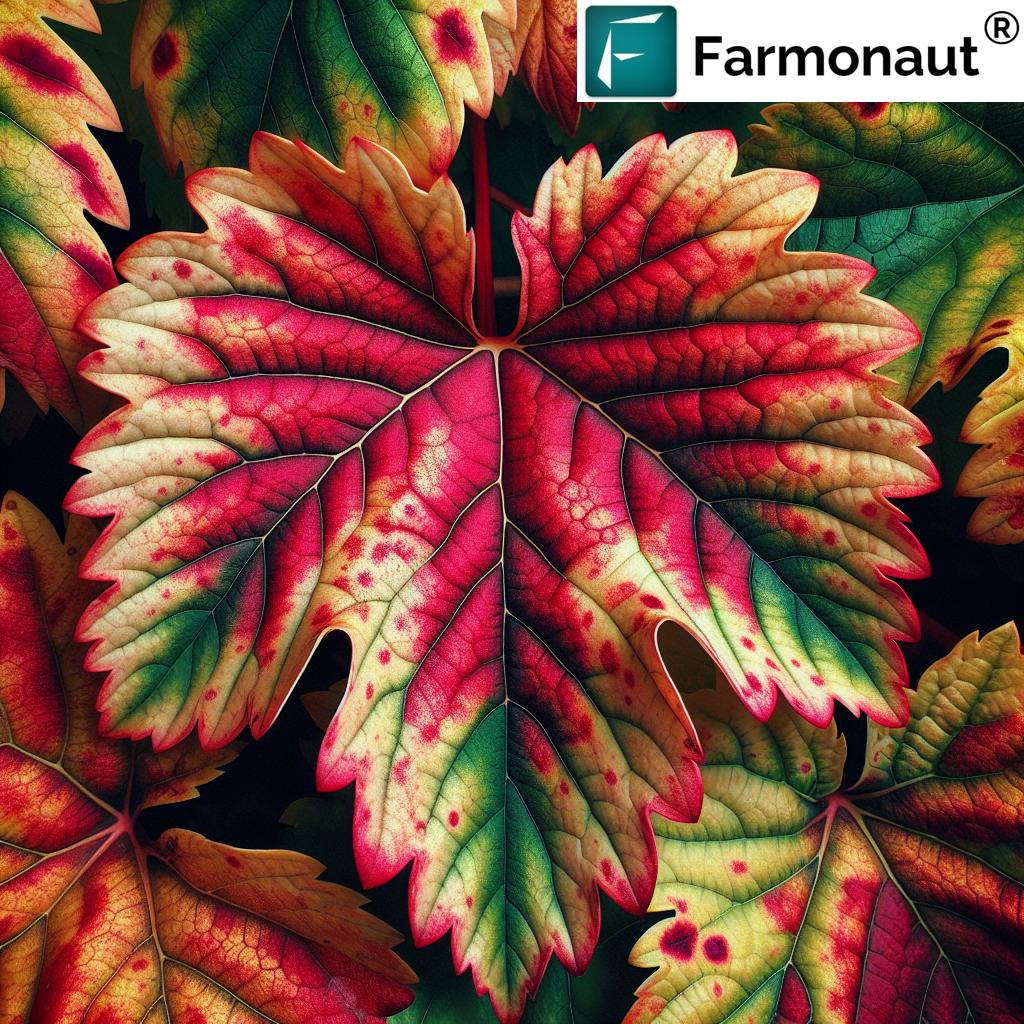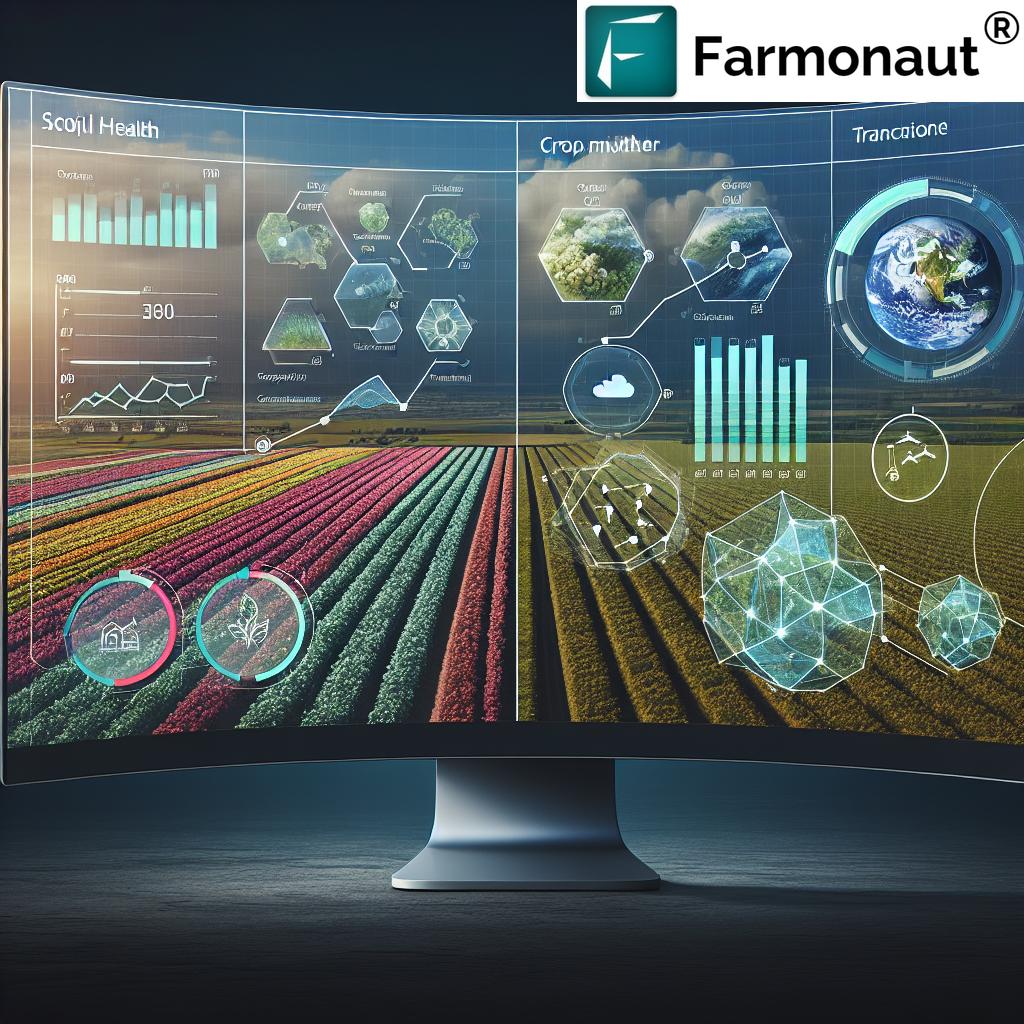Gray Leaf Spot in Corn: Identifying, Controlling, and Preventing this Fungal Disease in Your Fields

As we enter another growing season, corn farmers across the globe are gearing up to face one of the most challenging fungal diseases that can significantly impact their yields: Gray Leaf Spot. This persistent disease has been a thorn in the side of corn growers for decades, and its impact seems to be intensifying with changing climate patterns. In this comprehensive guide, we’ll dive deep into the world of Gray Leaf Spot, exploring its causes, symptoms, and most importantly, how we can effectively manage and prevent it using cutting-edge technology and time-tested agricultural practices.
Understanding Gray Leaf Spot in Corn
Gray Leaf Spot, caused by the fungal pathogen Cercospora zeae-maydis, is a major foliar disease affecting corn (Zea mays) worldwide. It’s particularly prevalent in areas with high humidity and moderate temperatures, making it a significant concern for corn growers in many regions.
The Life Cycle of Gray Leaf Spot
To effectively combat Gray Leaf Spot, it’s crucial to understand its life cycle:
- Overwintering: The fungus survives winter in infected corn residue on the soil surface.
- Spore Production: As temperatures rise in spring, the fungus produces spores on the residue.
- Spore Dispersal: Wind and rain splash disperse these spores onto new corn plants.
- Infection: Spores germinate and penetrate corn leaves through stomata.
- Lesion Development: Infection leads to the formation of characteristic gray lesions.
- Secondary Spread: New spores form on these lesions, continuing the cycle.
Symptoms and Identification
Recognizing Gray Leaf Spot early is key to effective management. Here are the primary symptoms to watch for:
- Early Stages: Small, gray to tan, rectangular lesions appear on lower leaves.
- Advanced Stages: Lesions elongate, following leaf veins, and may coalesce.
- Mature Lesions: Distinctly rectangular, gray to tan, with parallel sides and blunt ends.
- Severe Cases: Entire leaves may become blighted, leading to premature death.

The Impact of Gray Leaf Spot on Corn Production
Gray Leaf Spot can have devastating effects on corn yields, particularly when infection occurs early in the growing season or under favorable conditions for disease development.
Yield Reduction
The impact on yield can be significant:
- Moderate infections can reduce yields by 5-15%.
- Severe cases can lead to yield losses of 20-60% or more.
- Early infection and rapid disease progression are associated with greater yield losses.
Economic Consequences
Beyond direct yield losses, Gray Leaf Spot can have broader economic implications:
- Increased production costs due to fungicide applications.
- Potential loss of market opportunities due to reduced grain quality.
- Long-term impacts on land value if the disease becomes persistent in an area.
Factors Favoring Gray Leaf Spot Development
Understanding the conditions that promote Gray Leaf Spot is crucial for effective management. Several factors contribute to the disease’s prevalence and severity:
Environmental Conditions
- Temperature: Optimal growth occurs between 70-90°F (21-32°C).
- Humidity: High relative humidity (>95%) for extended periods promotes infection.
- Leaf Wetness: Prolonged leaf wetness (12-16 hours) enhances spore germination and infection.
Agricultural Practices
- Continuous Corn: Planting corn in the same field year after year increases disease pressure.
- Conservation Tillage: Reduced tillage practices leave more crop residue on the surface, providing overwintering sites for the fungus.
- Susceptible Hybrids: Planting corn varieties with low resistance to Gray Leaf Spot increases the risk of severe infections.
Geographical Factors
- Topography: Low-lying areas or fields surrounded by trees may have higher humidity levels, favoring disease development.
- Regional Climate: Areas with consistently warm, humid summers are more prone to Gray Leaf Spot outbreaks.
Managing and Controlling Gray Leaf Spot in Corn
Effective management of Gray Leaf Spot requires an integrated approach, combining cultural practices, genetic resistance, and chemical control methods. Here’s a comprehensive look at the strategies we can employ:
Cultural Practices
- Crop Rotation: Rotating corn with non-host crops (e.g., soybeans, wheat) for 1-2 years can significantly reduce disease pressure.
- Residue Management: Implementing tillage practices that bury crop residue can reduce the overwintering fungal population.
- Planting Date: In areas with high disease pressure, earlier planting can help crops develop before disease severity peaks.
- Field Sanitation: Removing or destroying infected crop debris can reduce the initial inoculum for the next season.
Genetic Resistance
Selecting corn hybrids with improved resistance to Gray Leaf Spot is a crucial management strategy:
- Work with seed suppliers to identify hybrids with high levels of resistance.
- Consider using a mix of hybrids with different resistance mechanisms to reduce the risk of resistance breakdown.
- Balance disease resistance with other desirable agronomic traits and yield potential.
Chemical Control
Fungicide applications can be an effective tool in managing Gray Leaf Spot, especially in high-risk situations:
- Timing: Applications are most effective when made at the early stages of disease development, typically around tasseling or early silking.
- Product Selection: Strobilurin and triazole fungicides, or mixtures containing these classes, are commonly used for Gray Leaf Spot control.
- Application Method: Aerial or ground applications can be effective, but ensure good coverage of the upper canopy.
Monitoring and Scouting
Regular field scouting is essential for early detection and timely management of Gray Leaf Spot. However, traditional scouting methods can be time-consuming and may miss early infections. This is where advanced technologies like satellite-based crop monitoring come into play.
Farmonaut’s Satellite-Based Detection: A Game-Changer in Disease Management
At Farmonaut, we’re revolutionizing the way farmers detect and manage diseases like Gray Leaf Spot. Our satellite-based crop monitoring system offers several advantages over traditional scouting methods:
| Aspect | Traditional Field Scouting | Farmonaut’s Satellite-Based Detection |
|---|---|---|
| Coverage Area | Limited to physically scouted areas | Entire field coverage with no physical limitations |
| Frequency | Typically weekly or bi-weekly | Daily updates (cloud permitting) |
| Early Detection | May miss early symptoms | Can detect subtle changes in crop health before visible symptoms appear |
| Time Required | Hours to days depending on field size | Minutes to analyze entire fields |
| Accuracy | Subject to human error and fatigue | Consistent, data-driven analysis |
| Data Visualization | Manual mapping and recording | Automated heat maps and vegetation indices |
| Historical Comparison | Limited by record-keeping practices | Easy access to historical data for trend analysis |
By leveraging Farmonaut’s technology, farmers can:
- Detect potential Gray Leaf Spot infections earlier, allowing for more timely interventions.
- Monitor larger areas more efficiently, ensuring no part of the field is overlooked.
- Make data-driven decisions about fungicide applications, optimizing both effectiveness and cost.
- Track the progression of the disease over time, informing future management strategies.
To learn more about how Farmonaut can help you manage Gray Leaf Spot and other crop health issues, visit our app page or explore our API offerings.
Integrated Management: Combining Technology with Traditional Practices
While satellite-based monitoring offers significant advantages, the most effective approach to managing Gray Leaf Spot combines this technology with traditional agricultural practices. Here’s how we can integrate various strategies:
1. Risk Assessment
- Use Farmonaut’s historical data to identify high-risk areas within your fields.
- Consider factors like previous crop history, tillage practices, and hybrid susceptibility.
- Monitor weather patterns using Farmonaut’s weather API to predict favorable conditions for disease development.
2. Targeted Scouting
- Use satellite imagery to guide ground-truthing efforts, focusing on areas showing potential stress.
- Combine visual inspections with data-driven insights for more accurate disease assessment.
3. Precision Application
- Utilize Farmonaut’s vegetation index maps to create variable-rate fungicide application plans.
- Target fungicide applications to areas showing early signs of infection, optimizing chemical use and reducing costs.
4. Continuous Monitoring
- Track the effectiveness of management strategies using regular satellite imagery updates.
- Adjust practices based on real-time data and observed results.
The Future of Gray Leaf Spot Management
As we look to the future, the management of Gray Leaf Spot and other corn diseases is likely to become increasingly sophisticated. Here are some developments we’re excited about:
Advanced Predictive Models
By combining satellite imagery, weather data, and machine learning algorithms, we’re working on developing more accurate predictive models for Gray Leaf Spot outbreaks. These models will help farmers anticipate disease pressure and take proactive measures.
Precision Breeding
Advances in genomics and breeding technologies are paving the way for corn hybrids with enhanced resistance to Gray Leaf Spot. We’re closely following these developments and will integrate this information into our advisory systems.
Automated Disease Detection
Our team is exploring the use of artificial intelligence and computer vision to automatically detect and classify Gray Leaf Spot lesions from high-resolution satellite and drone imagery. This technology could revolutionize early detection and targeted management.
Integrated Pest Management (IPM) Platforms
We’re working on integrating our satellite-based monitoring with comprehensive IPM platforms, allowing farmers to manage Gray Leaf Spot alongside other pests and diseases in a holistic, data-driven manner.
Conclusion: A New Era in Corn Disease Management
Gray Leaf Spot remains a significant challenge for corn growers worldwide, but with the right combination of knowledge, technology, and management practices, we can effectively mitigate its impact. By embracing satellite-based monitoring solutions like Farmonaut, alongside traditional agricultural wisdom, farmers are better equipped than ever to protect their crops and optimize yields.
Remember, successful management of Gray Leaf Spot requires vigilance, adaptability, and an integrated approach. By staying informed about the latest developments in disease management and leveraging cutting-edge technologies, we can work together to ensure healthier corn crops and more sustainable agricultural practices for years to come.
To start using Farmonaut’s advanced crop monitoring tools for your corn fields, download our app from the Google Play Store or the Apple App Store. For developers interested in integrating our satellite and weather data into their own systems, check out our comprehensive API documentation.
FAQ: Gray Leaf Spot in Corn
Q: How does Gray Leaf Spot spread from field to field?
A: Gray Leaf Spot primarily spreads through wind-borne spores. These spores can travel long distances, especially during storms or periods of high winds. Additionally, infected crop residue can be moved between fields on farm equipment.
Q: Can Gray Leaf Spot infect other crops besides corn?
A: While Gray Leaf Spot is primarily a disease of corn, some strains can infect other grasses. However, the economic impact is most significant in corn production.
Q: How long does it take for Gray Leaf Spot symptoms to appear after infection?
A: Symptoms typically appear 14-21 days after infection, depending on environmental conditions. This long latent period is one reason why early detection through advanced monitoring is so valuable.
Q: Are there any biological control options for Gray Leaf Spot?
A: While research is ongoing, there are currently no widely adopted biological control methods for Gray Leaf Spot. Management focuses on cultural practices, resistant hybrids, and fungicide applications.
Q: How does Gray Leaf Spot affect corn ears and grain quality?
A: Severe Gray Leaf Spot infections can indirectly affect ear and grain development by reducing the plant’s photosynthetic capacity. This can lead to smaller ears, reduced kernel fill, and lower overall grain quality.
Q: Can Gray Leaf Spot be completely eradicated from a field?
A: Complete eradication is challenging due to the pathogen’s ability to survive in crop residue and spread via wind. However, integrated management practices can significantly reduce disease pressure over time.
Q: How does climate change affect the prevalence of Gray Leaf Spot?
A: Climate change may lead to expanded ranges for Gray Leaf Spot, as warmer temperatures and increased humidity in some regions create more favorable conditions for the disease. This underscores the importance of adaptive management strategies and ongoing monitoring.













